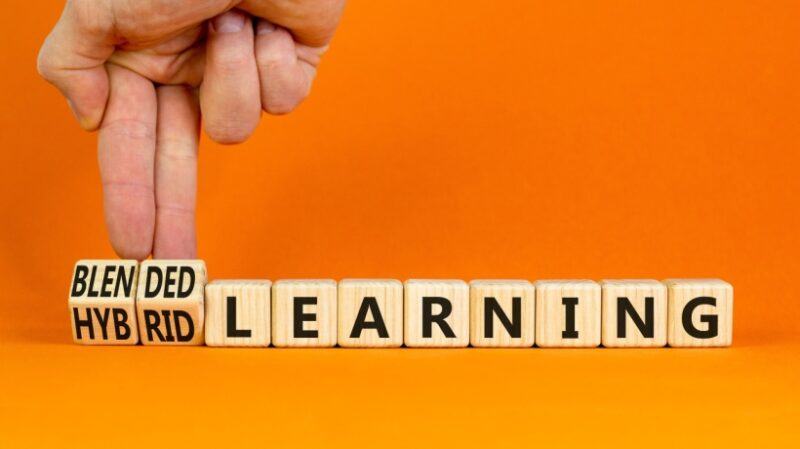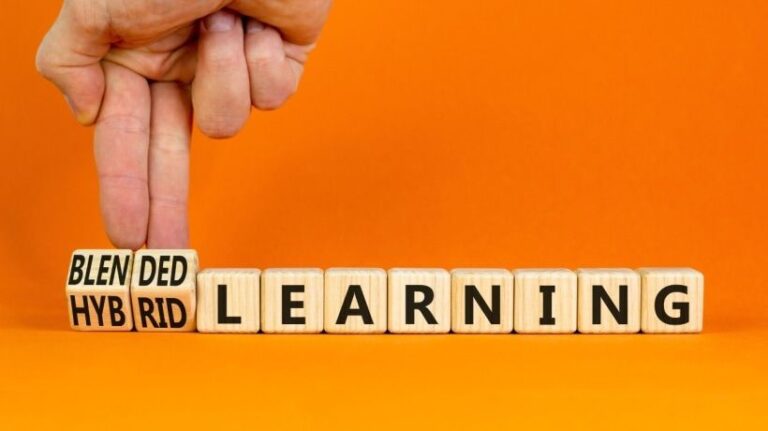
Why the future of education becomes a hybrid
The educational environment has changed significantly in recent years. Completely remotely learning has appeared on a central stage due to the global turmoil of pandemic, but many students and educators are the best in the world in both the flexible blends of online and face -to -face methods. I discovered that it can be provided. This “hybrid” approach is not just a short -term tendency, but a rapid basis for the future of education. The following are several reasons.
Six best functions and advantages of hybrid education
1. Improvement of flexibility and accessibility
One of the most important advantages of hybrid learning is to remove geographical and scheduling barriers.
Geographical barrier
Students no longer need to live near a physical campus. The class can be accessed from anywhere with a stable Internet connection. Competition schedule
The hybrid model will help you to work online if you can’t make it directly and work, your family, and more effectively.
This level of flexibility guarantees that people who can commit to the schedule on the campus in full time are no longer restricted.
2. Personalized learning path
Each student learns in a different way, and with a hybrid model, educators can create more individual learning experiences.
Self -paced module
Online components often include lectures and digital materials that students can visit at their own time. The target session is targeted
Classroom time can focus on discussions, group work, and practical projects that benefit from face -to -face interaction.
By blending online lessons face -to -face support, students can learn at the best pace and style for you.
3. Strengthening student involvement
Contrary to the belief that online education may be isolated, the appropriately designed hybrid programs can actually enhance engagement.
Interactive tool
Video conferences, live voting, and digital breakouts enables real -time exchanges, even if students log in from various places. Dynamic face -to -face session
When a learner meets physically, they are more likely to engage in a meaningful discussion or cooperative work that already covers basic materials online.
This double approach can lead to a richer and more active learning experience.
4. Cost efficiency of institutions and students
Pure physical campuses can be expensive for schools, and travel and relocation can be expensive for students.
Reduction of overhead
If the institution is far from a student group, you can save utility, classroom materials, and buildings. Reduction of student expenses
Students save commuting and housing costs, making education more accessible and affordable.
Hybrid models can relocate reserved resources to improve the quality of education, such as investing in better technology and employment in the Faculty of Technology.
5. Real world skill development
Today’s workplace often depends on virtual collaboration, digital tools and global teams. Hybrid education prepares students for that reality.
High -tech graduates
Unstoppable use of learning platforms and online communication tools leads to digital skills that can be used for workplaces. Collaboration Practis
Group projects, including both the campus and remote participants, mimic a variety of diverse teams in most industries.
This consistency between educational practices and professional environments is a smoother transition to labor.
6. Resilience to confusion
The ability to quickly switch learning mode, from natural disasters to global health emergency, is a great advantage.
Overted redundancy
When one channel (for example, face -to -face) is interrupted, virtual options can continue classes. Continuity of learning
Students do not lose progress because institutions can seamlessly between face -to -face and online guidance.
The hybrid system enhances schools and universities and enhances adaptability so that education is continued in difficult situations.
Final thoughts
Education has been transformed and is limited to a flexible and technical environment beyond traditional classrooms. Hybrid models use both face -to -face and remote learning to provide flexibility, personalization, and real world skills development. As technology continues to improve and our world is more interconnected, the hybrid approach is set to become a gold standard for education. By adopting this model, the institution provides students a innovative and high -quality learning experience.
FAQ
How effective is blended learning?
It has been proven that mixed learning is very effective. Teachers report higher -level engagement and motivation. Even the once -ranked schools bounced off when they introduced a classroom that turned over, despite being in a poor and poor neighborhood. The failure rate has declined, the graduation rate has increased, and registration of universities has increased by 90 % regardless of the characteristics of learners.
What is the ratio of online content in blend learning?
According to the Slone Consortium (now online learning consortium), the ratio of blended learning online content is 30-79 %. Terry, Zafonte, and Elliott say that blended learning will execute 30-50 % of course work in other ways other than face -to -face.
What kind of impact does a mixed learning affect students?
Mixed learning is useful for students in many aspects. Teachers report higher engagement and better motives. Blend learning effective statistics show a high score in test results. In addition, most students prefer mixed models than conventional students. Parents agree that schools provide more online content to develop additional skills, except that they agree with self -management, goal setting, and self -paced course materials. I hope.
What are the goals of blended learning?
The goal of mixed learning is to provide the learning experience, flexibility, and pace and learning style control to students. The purpose of mixed learning includes a remote learning opportunity, maximizing the benefits of face -to -face education. It leads to a higher test score, as shown by better understanding of content, higher engagement and motivation, and mixed learning statistics.


